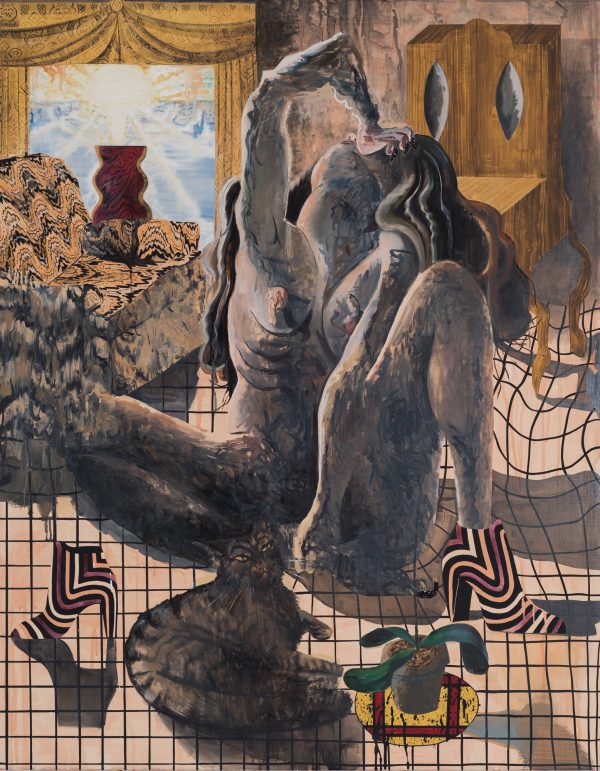The title for this group of paintings, Heavenly Bodies, refers to the idea that an individual body (specifically the feminine, maternal body) has the psychic impact of something a great deal larger, like a planet, or a collapsed star. It also alludes to questions about what—or whom—is considered holy (worthy of valorization). Emotionality—especially any display of distress / grief / pain—is associated with the feminine, and deemed unacceptable. “She’s too emotional,” is leveled as proof of a woman’s inability to conform / perform as part of a patriarchal capitalist system. These paintings challenge this norm, interweaving Art historical signifiers with the central image of trauma expressed by women, and disallowing the viewer any escape as their bodies utterly dominate the picture plane.
Heavenly Bodies
12.02.18 — Elizabeth Malaska
The title for this group of paintings, Heavenly Bodies, refers to the idea that an individual body (specifically the feminine, maternal body) has the psychic impact of something a great deal larger, like a planet, or a collapsed star. It also alludes to questions about what—or whom—is considered holy (worthy of valorization). Emotionality—especially any display of distress / grief / pain—is associated with the feminine, and deemed unacceptable. “She’s too emotional,” is leveled as proof of a woman’s inability to conform / perform as part of a patriarchal capitalist system. These paintings challenge this norm, interweaving Art historical signifiers with the central image of trauma expressed by women, and disallowing the viewer any escape as their bodies utterly dominate the picture plane.

